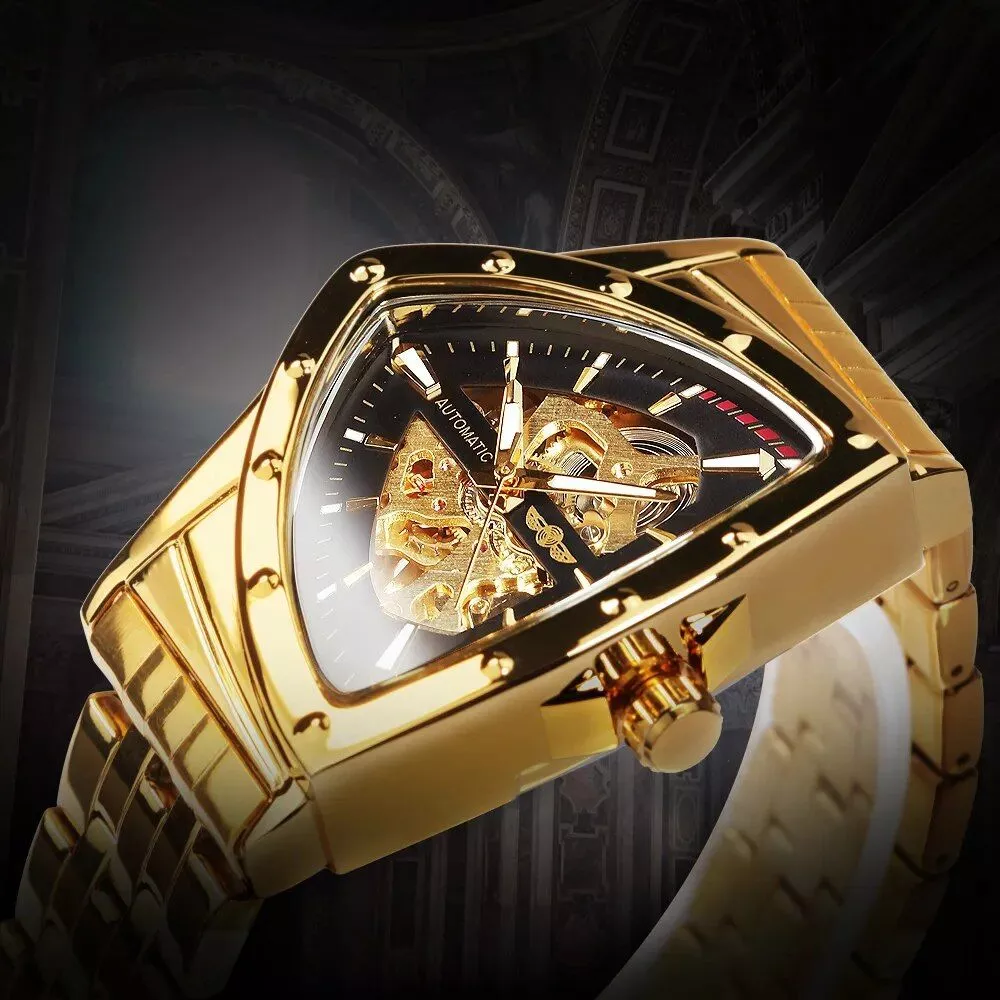The Enduring Art of Mechanical Watchmaking
The Enduring Art of Mechanical Watchmaking
Blog Article


In a world dominated by electronic timekeeping, the art of mechanical watchmaking stands as a testament to human ingenuity and precision. Each element within a mechanical watch is meticulously assembled, from the intricate balance wheel to the delicate escapement. This ancient craft requires years of dedicated training and a deep appreciation of both physics and artistry. The rhythmic ticking of a mechanical watch is a lullaby that fascinates the senses, reminding us of a time when craftsmanship was revered.
- The allure of mechanical watches lies in their intricacy, which is evident in the intricate interplay of gears and springs.
- Watchmakers dedicate countless hours to perfecting their skills, ensuring that each timepiece is a work of art.
- Owning a mechanical watch is an investment in a piece of history, a tangible symbol of the enduring legacy of human creativity.
The Enduring Allure of Mechanical Watches
For the discerning gentleman, a automatic watch is more than just a timepiece; it's a statement of classic taste. These intricate works of art are powered by the rhythmic dance of gears and springs, offering a tangible connection to the history and craftsmanship of horology. The satisfying hum of a mechanical watch is a constant reminder of its detailed design, making it a truly mesmerizing accessory.
From the sleek and modern designs of contemporary brands to the tradition of iconic models, there's a mechanical watch out there for every man. Whether you prefer a minimalist design, a rugged timepiece, or something more traditional, the world of mechanical watches offers endless possibilities to express your unique individuality.
- Embrace the enduring allure of a mechanical watch and elevate your style to new heights.
- A mechanical watch is more than just timekeeping; it's a heirloom.
- Explore the diverse world of makers and find the perfect mechanical watch to complement your life.
Skeletonized Wonders: Unveiling the Intricate Beauty of Mechanical Movements
Within the realm of horology, there exists a captivating subcategory that enchants watch enthusiasts with its sheer complexity: skeletonized watches. These timepieces, distinguished by their exposed movements, reveal a symphony of gears, springs, and levers, spinning in harmonious choreography. The artisan's mastery shines through in the meticulous craftsmanship of each component, sculpted into delicate works of art. Every@plate is a testament to precision engineering, and every tiny wheel whispers a story of time's relentless passage.
The allure of a skeletonized watch lies not only in its visual beauty but also in the glimpse it provides into the soul of this complex mechanism. It is a window into a world where time itself is revealed through intricate arrangements. Each tick and beat becomes a tangible expression of horological artistry, inviting the observer on a voyage into the fascinating realm of mechanical movements.
Exploring the Symphony of Gears: The Mechanics Behind a Watch
A timepiece is more than just a device for telling the time; it's a intricate mechanism. Within its slender case, a ballet of gears orchestrates the passage of seconds, minutes, and hours. The mainspring, wound with meticulous care, provides the initial force that sets this {complex{ system in motion. The gears, each meticulously crafted, here transmit this drive through a series of linked formations. The timing mechanism acts as the heart of the watch, ensuring that each tick is measured. From the oscillating balance wheel to the tiny hands that point to the time, every component plays a crucial role in this harmonic dance of mechanics.
Mastering Time: Understanding the Inner Workings of Mechanical Watch Movements
Mechanical watches are more than just timekeeping devices; they are intricate works of art powered by a symphony of gears, springs, and levers. Each movement, a microcosm of engineering brilliance, works with astonishing precision. To truly appreciate the elegance of a mechanical watch, one must delve into its inner workings and grasp the delicate ballet of components that bring time to life.
The heart of every mechanical watch is its escapement, a mechanism responsible for regulating the flow of energy from the mainspring. The escapement's intricate design ensures that the watch ticks at a consistent pace, delivering accurate timekeeping. Adjacent to the escapement lies the balance wheel, a tiny oscillating weight that dictates the movement's rhythm. The interplay between the escapement and the balance wheel creates a harmonious rhythm that powers the watch's hands.
- Gearheads can explore the complexity of various movement architectures, from simple hand-wound designs to complex automatic watches.
- Each type of movement offers unique qualities, influencing the watch's power reserve, accuracy, and overall performance.
The world of mechanical watches is a captivating realm where precision engineering meets artistic craftsmanship. By learning the inner workings of these intricate machines, we gain a deeper appreciation for the science of timekeeping.
A Legacy in Motion: The Allure and Precision of Mechanical Watches
In an era dominated by the electronic world, there's a timeless appeal to the intricate workings of mechanical watches. These exquisite timepieces, powered by a symphony of gears and springs, represent a legacy that spans centuries, a testament to human ingenuity and mastery. Each tick and tock is a reminder of meticulous design and precise engineering, a world away from the sterile functionality of their digital counterparts.
The allure of a mechanical watch lies not just in its accuracy but also in its complexity. The delicate hands glide effortlessly across the dial, guided by the tireless rhythm of the internal mechanisms. These watches are often adorned with complex designs, featuring intricate dials, luxurious materials, and detailed engravings, transforming them into wearable works of art.
Beyond their aesthetic charms, mechanical watches offer a unique connection to the past. They are tangible reminders of a time when precision was measured by hand, when each movement required skill and patience. Owning a mechanical watch is an investment in history, a way to appreciate the enduring legacy of craftsmanship that has shaped our world.

 Report this page
Report this page